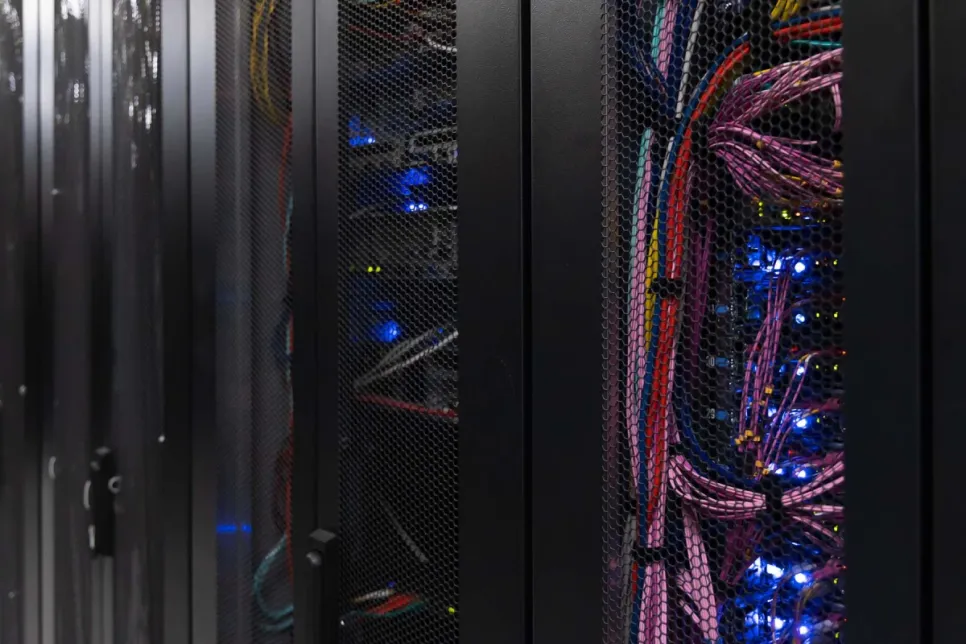Cost-Effective, Secure Storage with TaaS
AI and analytics applications are transforming industries, making efficient data management and archiving crucial for businesses of all sizes.

A cross connect is a point-to-point connection between two endpoints in a data center. These could be two devices, networks, or data center environments within a facility.
The aim of a cross connect is to create private network connectivity between these two entities. It avoids public internet exchanges while establishing seamless data transfers within the business ecosystem. This ensures that transfers happen quickly, more efficiently, and privately — improving performance and boosting data security.
As businesses rely increasingly on data generation and rapid transfers, cross connects are becoming more crucial than ever. An Amazon report showed that the cost of latency is 1% of sales per 100 milliseconds. A cross connect can help lower latency, saving costs in the process. There are also many IT infrastructure and disaster recovery advantages.
What are the types of cross connects?
Data center operators create connections using different types of cross connect cables. These cables can connect various endpoints, such as:
No matter the cross connection, the aim is to allow rapid, secure, and reliable data transfers. For example, colocation data centers use meet-me rooms for physically connecting two pieces of equipment. Depending on the use case and aims, data centres may use different types of cross connects to build these connections, such as:
Fibre optic cables facilitate high-speed, long-distance data transfers. Depending on the bandwidth and distance involved, they may use single-mode fiber or multimode fiber connections. These connections best support high-performance or data-intensive workloads.
Copper cables, also known as Plain Old Telephone Service (POTS), are tried-and-tested and still used for shorter and smaller connections. Though relatively cost-effective and reliable, these are unsuitable for modern high-bandwidth data streams. Copper cross connects are gradually being replaced by fibre-optic connections which offer enhanced speed and bandwidth capabilities.
Ethernet cables, like CAT5 and CAT6, are still widely used in data centers. These are common in local area networks, facilitating the flexible and efficient connection of two entities.
Virtual connections, which are increasingly common within software-defined networking, are created through orchestration portals. These are flexible and scalable, reducing the need for manual cable connections.
What are the benefits of cross connects?
Cross connects offer numerous advantages that are crucial for the efficient operation of data centers. The first is cost-efficiency.
A cross connect can reduce the need for excess data transmissions, while direct connections between devices reduce other IT infrastructure and connectivity costs. Likewise, efficient data transfers improve power usage — reducing energy costs over time.
Scalability is similarly crucial for meeting modern business demands. A cross connect’s scalability allows the slightest infrastructure changes to have the maximum impact. Businesses can add new connections or alter existing ones quickly and efficiently.
Cross connects also offer tremendous flexibility. Businesses can work directly with a range of partners, customers, and service providers all within the same data centre for endless connectivity options. These can manage different business needs or improve collaboration.
As we’ve demonstrated, each type of cross connect has its benefits and limitations. Some tasks may require the highest latency, while others might focus on cost reduction. Working with an experienced data center provider will help you identify the best cross connect for your needs.
The importance of a cross connect
By connecting services, data centers can achieve many crucial benefits.
A cross connect provides dedicated bandwidth to a given connection. This reduces data transfer times and bottlenecks, improving the performance of a given task. In instances such as financial operations, real-time analytics, or streaming services, a cross connect provides the minimal latency service needed.
Establishing a private cross connection can also help protect critical data. With the two entities physically connected within the safe confines of a data center, it’s extremely difficult to intercept traffic flow. Additionally, since there are no public networks involved in the data exchange, cross connects help businesses meet critical privacy regulations, such as the GDPR and HIPAA.
Downtime costs organizations billions of dollars annually.1 Thus, achieving higher reliability and redundancy through cross connections is more vital than ever. A cross connect can help businesses improve network resilience and promote uptime through multiple data transfer pathways while helping to avoid data loss. Should one line suffer an incident, another ensures business continuity.
Above all, point-to-point cross connections are relatively straightforward. These don’t require a lot of functionality or equipment, making it relatively simple to provision, troubleshoot, and manage. This helps reduce the overall complexity of ecosystems — all while promoting more efficient, secure, and cost-effective performance.
Future trends in cross-connect technology
Driven by several key advancements and industry trends, cross-connect technology is constantly progressing. Most notably, emerging technologies, like 400G Ethernet and hollow-core fiber cables, are revolutionizing cross connects with unprecedented speeds and minimal latency. The introduction of these technologies will only continue to increase data transfer speeds.
Similarly, experts predict that the role of cross connects will continue to expand. We’ve already seen advances in cloud computing, the Internet of Things, 5G, and artificial intelligence. Because these cutting-edge technologies all require vast data transfers from robust and flexible connectivity solutions, cross connects will be essential in ensuring their seamless and efficient data flow.
Finally, as edge computing continues to experience widespread use, it also brings increasingly localized data processing and storage needs. Cross connects will be crucial in linking edge data centres with core facilities — facilitating the low-latency, high-speed data transfer necessary for real-time applications.